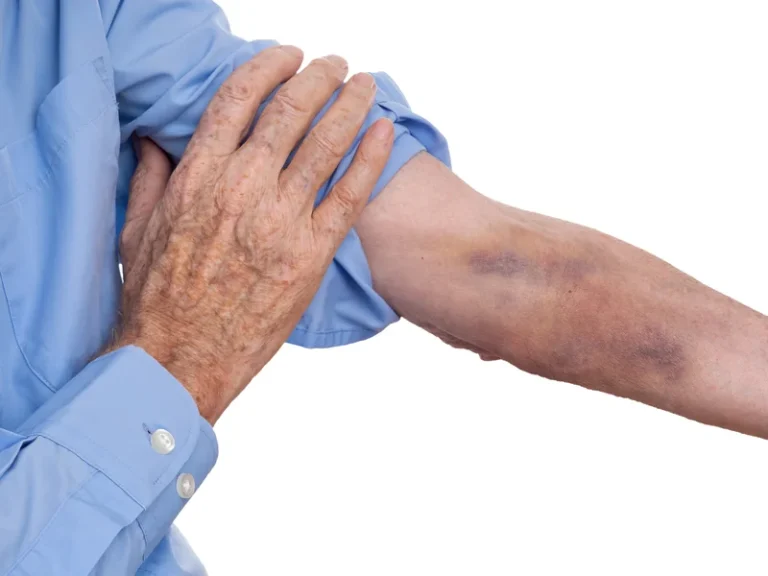Understanding Alcohol Use Disorder National Institute on Alcohol Abuse and Alcoholism NIAAA

People can focus on education and support, such as through Alcoholics Anonymous, or take on a sobriety challenge. People can learn mindfulness; rather than trying to soothe uncomfortable feelings with alcohol, mindfulness encourages techniques such as breathing, visualization, and meditation. As anyone who has had even a glass of wine can attest, alcohol can have a noticeable influence on mood. Drinking releases endorphins which can lead people to feel happy, energized, and excited.

Stimulant Use Disorder
These damaged cells are prematurely destroyed in the spleen, and the patient may develop acute hemolytic anemia. Trait markers could help identify people at risk for alcoholism who could benefit most from early, targeted prevention and intervention approaches. These high-risk populations most prominently include first-degree relatives of alcoholics. Trait markers https://ecosoberhouse.com/article/alcoholic-ketoacidosis-symptoms-and-treatment/ also could provide important research tools for evaluating the genetic and environmental factors that may predispose a person to alcoholism. Alcohol-related abnormalities in RBC production manifest themselves not only in the bone marrow but also through the presence of defective RBC’s in the blood. For example, grossly enlarged RBC’s can occur in the blood—a condition called macrocytosis—as well as oddly shaped RBC’s that are subject to premature or accelerated destruction (i.e., hemolysis) because of their structural abnormalities.

How can I prevent alcohol use disorder?
- Severity is based on the number of criteria a person meets based on their symptoms—mild (2–3 criteria), moderate (4–5 criteria), or severe (6 or more criteria).
- Alcohol has numerous adverse effects on the various types of blood cells and their functions.
- Profound hypophosphatemia may cause the phosphate and ATP levels in the RBC’s to decline substantially.
Alcohol consumption was also linked to a greater risk for stroke, coronary disease, heart failure, and fatally high blood pressure. However, it’s difficult to discern if drinking was the primary problem, or whether lifestyle choices such as diet and exercise influenced health outcomes as well. A common initial treatment option for someone with an alcohol addiction is an outpatient or inpatient rehabilitation program. It can help someone handle withdrawal symptoms and emotional challenges. Outpatient treatment provides daily support while allowing the person to live at home.
- Alcohol use disorder develops when you drink so much that chemical changes in the brain occur.
- Hypersplenism, a condition characterized by an enlarged spleen and deficiency of one or more blood cell types, can induce premature RBC destruction.
- The system allows air to reach the lungs, helps oxygen circulate through the blood, and removes waste gases.
- The neutropenia was transient, however, and in several patients a rebound leukocytosis occurred between 5 and 10 days after hospital admission.
- Some researchers have suggested that alcohol intoxication itself, rather than alcohol-related nutritional deficiencies, causes the decrease in platelet numbers.
- “Some people think of the effects of alcohol as only something to be worried about if you’re living with alcohol use disorder, which was formerly called alcoholism,” Dr. Sengupta says.
Check your drinking
- You might not recognize how much you drink or how many problems in your life are related to alcohol use.
- Cirrhosis, on the other hand, is irreversible and can lead to liver failure and liver cancer, even if you abstain from alcohol.
- These individuals, sometimes called “almost alcoholics,” may not see the connection at first but would often benefit from help and support.
- For example, grossly enlarged RBC’s can occur in the blood—a condition called macrocytosis—as well as oddly shaped RBC’s that are subject to premature or accelerated destruction (i.e., hemolysis) because of their structural abnormalities.
Further studies indicate that alcohol impairs monocyte/macrophage function rather than production. Thus, the cells frequently remain at their normal locations in the tissues rather than migrate to the sites of infections. Chronic ingestion of large quantities of alcohol alters many physiological and biological processes and compounds, including several blood-related (i.e., hematological) variables. Because blood samples are relatively easy to obtain, structural and functional changes in circulating blood cells and plasma proteins potentially can form the basis of laboratory tests why do people become alcoholics for screening, diagnosing, and monitoring alcoholism.
Do you feel ANNOYED because other people have criticized your drinking?
Before it becomes problematic, why do people turn to alcohol in the first place? One is simply its rewarding consequences, such as having fun or escaping social anxiety. Having an impulsive personality plays into the decision to seek rewards despite negative repercussions. Another factor is stress, because alcohol can alleviate distressing emotions. Social norms, such as drinking during a happy hour or on a college campus, and positive experiences with alcohol in the past (as opposed to getting nauseous or flushed) play a role as well.


